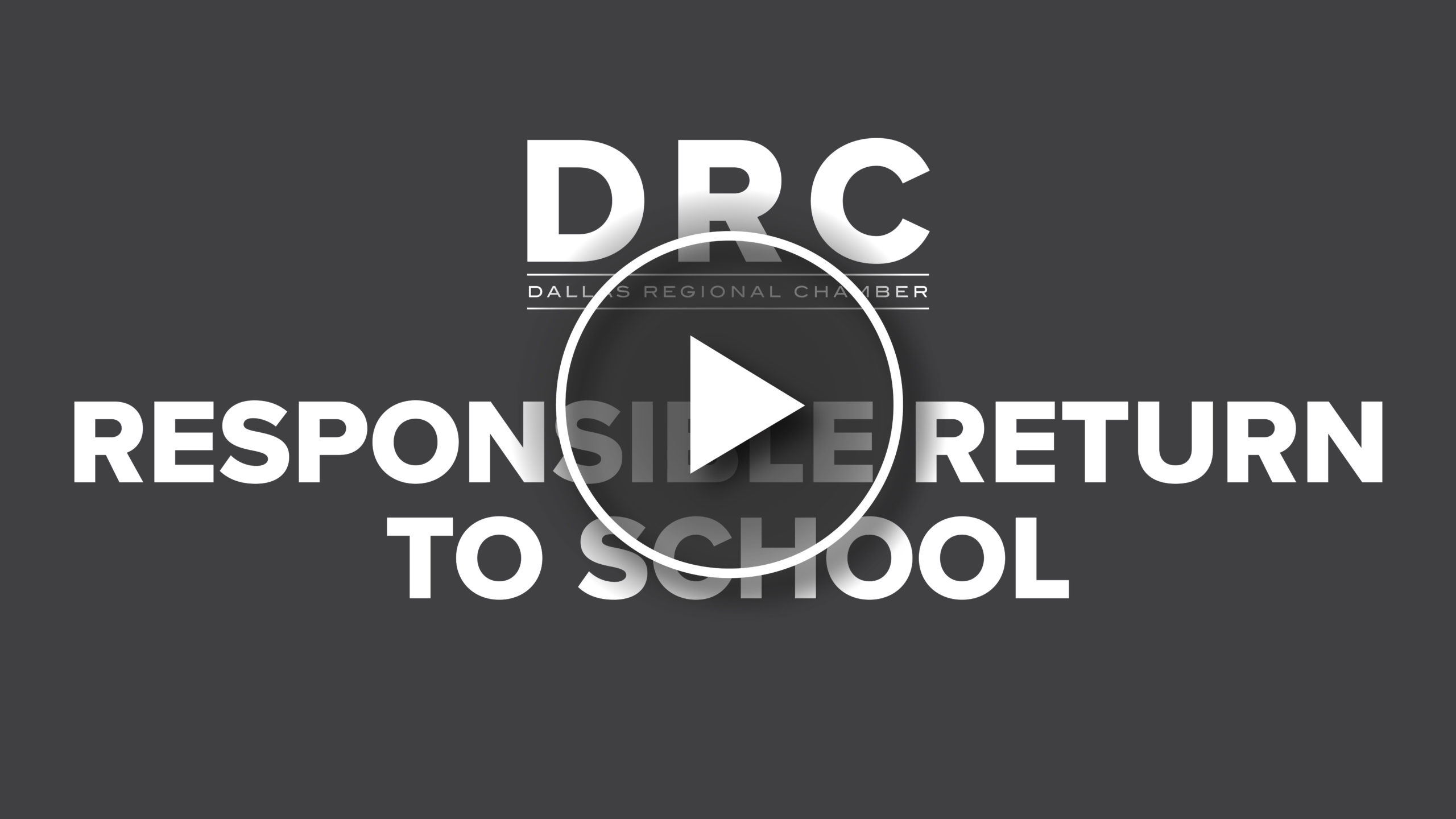Michael Wood, Manager, Education & Workforce
With the start of the 2020-21 school year fast approaching, Texas parents have been tasked with the daunting decision of choosing whether to send their children back to in-person school or continue virtual instruction.
Through two “Responsible Return to School” virtual events, the Dallas Regional Chamber offered parents critical information on physical and social emotional health, as well as virtual learning as they contemplate this important decision. The meetings, which were offered as separate sessions based on student age, featured speakers from Children’s Health, the Momentous Institute, Istation, Big Thought, the University of Texas at Arlington, and Microsoft.
The primary takeaway from the panel was clear: there is no objectively right or wrong answer for parents struggling to decide which option is best. That decision is personal but should still be informed by an assessment of each child’s health and social emotional well-being, family risk factors, and the school district’s plans for in-person and virtual learning.
Of utmost concern to parents is the health and safety of their children should they choose face-to-face instruction. While children who contract COVID-19 can be less likely than adults to experience severe symptoms, Dr. Brad Tate of Children’s Health cautioned against the false sense of security many feel when it comes to the virus’ impact on and prevalence among young people. Since the outbreak, more than 3,800 Dallas County children under age 18 have contracted the virus, accounting for 10% of all cases. Hospitalizations among children are also on the rise in Dallas County, with some cases proving fatal even among children without pre-existing medical conditions.
Even if children are at reduced risk of having a severe bout with COVID-19, parents should consider their own risk factors before electing to send a child back to school.
“When you think about COVID and risk factors, you really need to view your family as a whole,” said Dr. Tate. “When [your child] goes to school, there’s a real possibility [he/she] could bring [the virus] home.”
In addition, parents are increasingly worried about the social emotional well-being of their children. Byron Sanders, President and CEO of Dallas-based nonprofit Big Thought, noted the pandemic and the social isolation it has forced upon students has emerged as a new category of traumatic stress. Traumatic stress – which typically takes the form of abuse, neglect, and poverty – can alter a child’s brain physiology and manifest as poor academic outcomes and even long-term health problems.
Sanders notes in-person school can alleviate some of the negative social emotional impacts for students by offering a reliable routine and grounding them in relationships outside their own family. These relationships and routines can provide safety and security for students and ultimately improve their social, emotional, and mental well-being.
The importance of both family risk factors and student social emotional health reinforce that there is no one right answer for parents this fall. Regardless of the decision, the panelists agreed that parents should bring their children – no matter their age – into the conversation and consult them on their thoughts and feelings about going back to school. Doing so may improve student buy-in to the final decision, and affords them a degree of agency during a time in which they have had little control over their day-to-day lives.
Whether parents pursue in-person or virtual school for children, there are measures to take in the interim and once the school year starts to improve the experience. Fortunately, many school districts are offering flexibility, allowing parents to change their decision, if needed, after each grading period.
For in-person school, Jessica Trudeau, Executive Director of the Momentous Institute, encouraged parents to practice a school day with their children before the academic year begins. This may include wearing a face mask for a full day, washing hands in between activities at home, and remembering to not share items among their peers. Not only will this exercise help instill good habits in students before they arrive for the first day of class, but it will also help them mentally prepare for a dramatically altered school experience.
Trudeau further encouraged parents to consult directly with their school to understand plans for in-person school, particularly related to situations that may see larger congregations of students, such as lunchtime and passing periods.
Parents choosing virtual school should expect improved distance learning infrastructure from their school district. In the spring, many districts were unprepared for the swift transition to virtual learning. Since then, districts have improved virtual learning platforms, and teachers have had access to professional development opportunities to better facilitate remote learning.
Even so, sitting in front of a computer all day, every day is detrimental to both student learning and health. Parents should ensure that their school’s distance learning plan incorporates a balance of on-screen and off-screen activities, urged Lori Lynch of Istation and Robyn Hrivnatz of Microsoft.
Parents may also support a child’s virtual learning by encouraging proper time management, a pronounced challenge among high school and college students. Dr. Jihan Woods of the University of Texas at Arlington noted that older students struggled to maintain good sleep and work schedules, and blurred the lines between ‘home’ and ‘work’ while engaging in virtual classes during the spring. Improving those habits, said Dr. Woods, is key to achieving positive student outcomes.
Additional resources:
-
-
- CDC: Back to School Decision Making Tool
- CDC: Back to School Check-list
- CDC: Keeping Children Healthy
- Children’s: Talking to Your Child About COVID-19
- Istation: Red Cape Classroom Series
- Dr. Jihan Woods of UT Arlington: Your Family + COVID-19
- Microsoft: Digital Skills
- Big Thought: Dallas City of Learning
- CDC: Back to School Decision Making Tool
-
